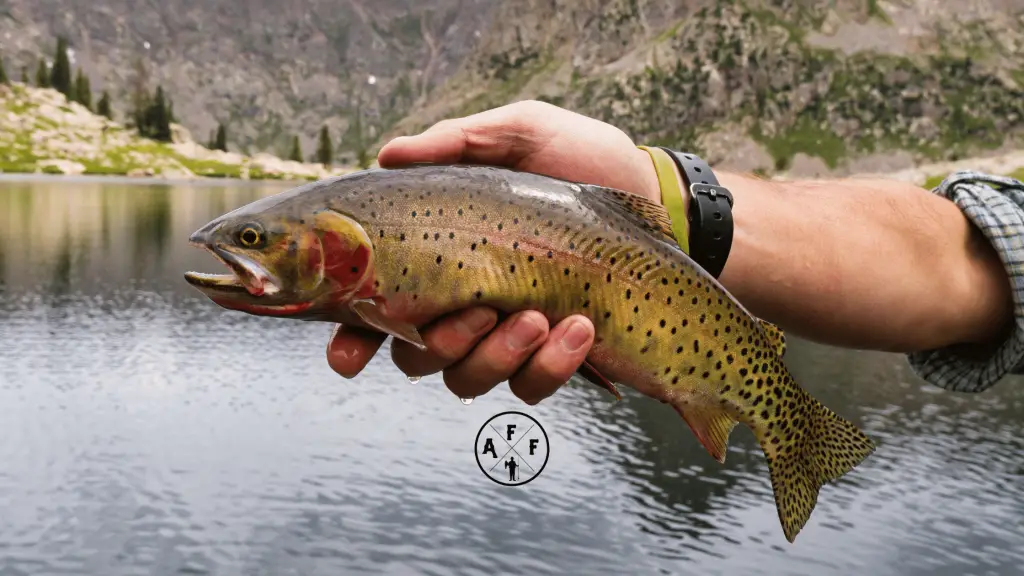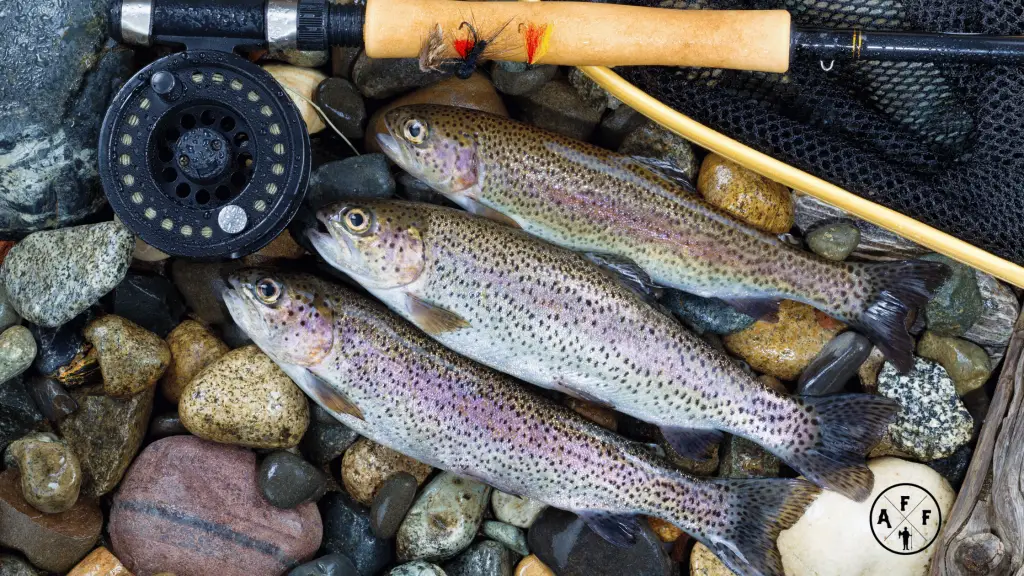
I’ve always been intrigued by the idea of making my own homemade trout bait. Over the years, I tried various store-bought baits, but there’s something satisfying about creating your own bait using everyday ingredients found in your kitchen. Not only can it save you money, but it also allows you to experiment with different bait combinations to figure out what works best in attracting those prized trout.
Throughout my research, I stumbled upon several interesting homemade trout bait recipes that utilize ingredients such as flour, oatmeal, maple syrup, and even sardines. The efficacy of these homemade bait recipes is determined by the ingredients’ ability to appeal to the trout’s sense of taste and smell. Trout are particularly attracted to sweet and strong-smelling food items, making it essential to include such elements in the bait recipe.
Some recipes call for ingredients like strawberry Jello powder for sweetness, while others use cod liver oil to provide a powerful underwater scent to attract trout. In any case, the key to the success of a homemade trout bait recipe is finding the right balance between taste, smell, and consistency. So, let’s take a closer look at some popular homemade trout baits and experiment with our own concoctions to improve our chances of landing that big catch.
Why Homemade Trout Bait?
As an angler, I have found that using homemade trout bait offers a variety of advantages over store-bought alternatives. One of the main reasons I prefer homemade bait is its versatility. By experimenting with different ingredients and techniques, I can create unique bait combinations that cater to the specific tastes and preferences of trout in my local fishing spots.
Another aspect I particularly enjoy about making my own trout bait is the freedom to control the quality of the ingredients. This way, I can ensure that the bait is fresh and free from harmful additives, which can sometimes be found in mass-produced products. This, in turn, can make the bait more enticing to fish and potentially result in improved catch rates.
Moreover, by preparing trout bait at home, I can tailor the bait’s scent and flavor in a way that best suits the trout I am targeting. Trout are known to be attracted to certain scents, and by incorporating these scents into my homemade bait, I can increase the likelihood that they will be enticed to bite.
Besides the benefits I reap while fishing, I also appreciate the cost-effectiveness of homemade bait. Store-bought bait can often be quite expensive, especially if you fish frequently. By making my own bait, I can manage my costs more efficiently, without compromising the quality and effectiveness of my fishing gear.
Lastly, I find that the process of making my own trout bait adds an extra layer of satisfaction to the art of fishing. It is a creative outlet that lets me connect with the fish I am pursuing in a way that store-bought alternatives simply cannot offer. The challenge of developing and refining my own bait recipes not only makes me a better angler but also deepens my understanding of the fish I am targeting.
Essential Ingredients
As a passionate angler, I’ve experimented with various homemade trout bait recipes. To create effective bait, it’s crucial to include three major types of ingredients: protein sources, scent attractants, and binding agents. Understanding the role of each will help you make trout bait that’s irresistible to your target fish.
Protein Sources
Trout are primarily carnivorous and have a strong preference for protein-rich food, so including a protein source in your bait is essential. Some options that I’ve found effective include:
- Uncooked instant oatmeal
- Water-packed sardines
- Fish eggs
Depending on the recipe, you can use these ingredients as-is or grind them into a fine powder for mixing into your bait.
Scent Attractants
Trout have an excellent sense of smell, which plays a significant role in their feeding behavior. That’s why adding scent attractants to your bait will increase its effectiveness. Some of my go-to scent attractants include:
- Maple syrup
- Strawberry Jello powder
- Anise oil
- Cod liver oil
Be cautious not to overpower your bait with scent, as it might deter trout instead of attracting them. A few drops or spoonfuls are usually enough.
Binding Agents
To keep your bait intact in the water, binding agents are necessary. They ensure that your protein sources and scent attractants stay together and make the bait easy to handle. Common binding agents I use are:
- All-purpose flour
- Water
The right combination of protein sources, scent attractants, and binding agents will form a dough-like consistency, creating a bait that’s irresistible to trout.
Effective Bait Recipes
Dough Bait
One effective homemade trout bait is the dough bait. To create this recipe, follow these steps:
- Combine 1 ½ cups of flour, 2 cups of uncooked instant oatmeal, and ½ cup of sugar in a bowl
- Mix in 4 tbsp of maple syrup and 6 tbsp of strawberry Jello powder
- Slowly add 3 ½ cups of water, mixing thoroughly
When the mixture has a dough-like consistency, you can form small balls of bait to place on your hook.
Cheese Bait
Another effective trout bait is cheese bait, made using sardines. Follow these instructions:
- Obtain 1 pack of water-packed sardines
- Mash the sardines in a bowl
- Add flour gradually until the mixture reaches a thick consistency
The result will be a potent cheese-like bait that trout will find tempting.
Egg-Based Bait
Egg-based bait is also successful in attracting trout. Here is a simple recipe I prefer:
| Ingredient | Amount |
|---|---|
| All-purpose flour | 1 cup |
| Water | 1 cup |
| Cod liver oil | 1 tbsp |
| Anise oil | 1 tsp |
Mix the water with the flour until a dough forms. Then, add the cod liver oil and anise oil, mixing thoroughly. Once again, the mixture should be ready to form into small dough balls for use as bait on your hook.
Adding Colors and Scents
In my experience with homemade trout baits, adding colors and scents can significantly increase their effectiveness. This section will discuss various techniques for enhancing the visual and olfactory appeal of your bait.
One simple way to add color to your bait is by using food coloring. I found that injecting bait, like marshmallows, with a few drops of desired color is quite effective. You might need to experiment to see which colors are most attractive to the trout in your area, but it’s a worthwhile effort.
When it comes to adding scents, I suggest using natural ingredients that are known to attract trout. For example, adding a few drops of Pro-Cure bait scents to mini marshmallows significantly enhances their appeal. Another option is to create a homemade liquid scent by combining garlic powder, oil or water. Simply soak your lures in the mixture for a few hours, occasionally stirring, to infuse them with scent.
Here are some popular scent and ingredient options:
- Garlic powder
- Pro-Cure bait scents
- Anise oil
- Vanilla extract
Remember, when making your homemade trout bait, it’s essential to avoid using toxic or harmful substances. Stick to natural, food-grade ingredients, and always consider the environmental impact of your bait.
Storing Homemade Trout Bait
When it comes to storing homemade trout bait, it’s important to consider the ingredients used and the overall consistency of the bait. Based on my experience, keeping the bait fresh and effective is crucial for successful fishing trips.
For dough-based baits, like those made with flour, sugar, and syrup, I recommend sealing them in an airtight container or a plastic zip-top bag. This prevents the bait from drying out and maintains its attractive aroma. Remember to label the containers with the bait type and date of preparation, so you can keep track of their freshness.
Some homemade baits contain fish oil, anise oil, or other strong-smelling liquids. If your bait includes these ingredients, you’ll want to store it in the refrigerator to reduce the chances of the scent penetrating other items. To do this, I usually cover the container with plastic wrap and then place it in a sealable plastic bag. This double layer of protection helps contain the odors and preserve the bait’s effectiveness.
When it’s time for your next fishing trip, simply take out your stored bait and allow it to warm up to room temperature before using it. You might notice that chilled dough baits become firmer, so feel free to pinch off small amounts and roll them into balls. This ensures that the bait stays on the hook and is easier to work with.
Here’s a summary of my recommendations for storing homemade trout bait:
- Seal dough-based baits in airtight containers or plastic bags
- Label containers with bait type and date of preparation
- Refrigerate baits with strong-smelling oils
- Double-wrap baits in plastic wrap and bags to contain odors
- Let baits warm up to room temperature before use
Tips for Success on the Water

When I prepare for a day on the water, I start by choosing the right homemade trout bait. Based on my experience and research, a sweet bait made with 1 ½ cups of flour, 2 cups uncooked instant oatmeal, ½ cup of sugar, 4 tbsp maple syrup, 6 tbsp strawberry Jello powder, and 3 ½ cups of water is quite effective. Combine the dry ingredients in a bowl, mix thoroughly, add maple syrup, and slowly add water while mixing.
With my bait prepared, I ensure my fishing gear is in optimal condition. I inspect my fishing rod for any signs of wear and tear, as well as make sure the reel is clean and functioning properly. My choice of fishing line depends on the water clarity; for clear water, I opt for a thin, fluorocarbon line to make it less visible underwater.
Trout tend to be more active during the early morning and late afternoon, so I try to plan my fishing trips around these times. The weather plays a significant role as well; overcast or drizzly days can increase trout activity, making them more likely to bite.
Once I’ve found the perfect spot, I pay close attention to the following factors:
- Depth: Trout are usually found in deeper water during warmer months, so adjusting my bait’s depth is crucial.
- Location: Trout prefer areas with a mix of current and cover, such as submerged logs or weeds. I cast near these features to increase my chances of success.
- Presentation: I like to keep my bait’s movement as natural as possible, so I retrieve it with a slow and steady pace.
In conclusion, the key to success on the water is a combination of adequate preparation, using the right bait, and attentiveness to the conditions and habits of trout. By following these tips, I’ve found my homemade trout bait to be quite effective, leading to many memorable catches.










